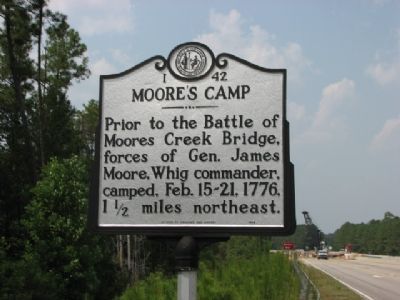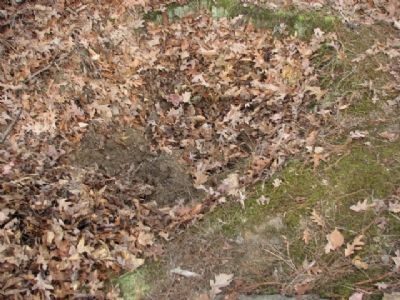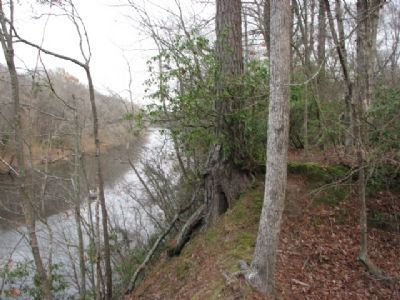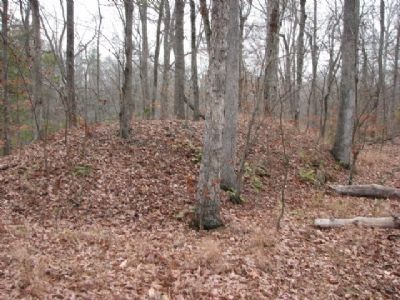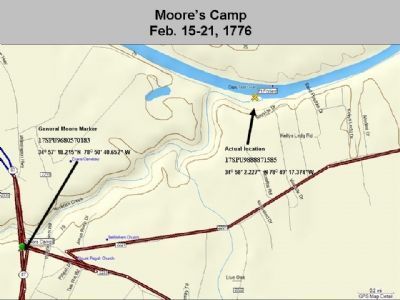Grays Creek in Cumberland County, North Carolina — The American South (South Atlantic)
Moore's Camp
Erected by North Carolina Division of Archives and History. (Marker Number I-42.)
Topics and series. This historical marker is listed in these topic lists: Forts and Castles • War, US Revolutionary. In addition, it is included in the North Carolina Division of Archives and History series list. A significant historical date for this entry is February 15, 1905.
Location. 34° 57.349′ N, 78° 50.677′ W. Marker is in Grays Creek, North Carolina, in Cumberland County. Marker is at the intersection of State Highway 87 and Butler Nursery Road, on the right when traveling south on State Highway 87. Marker located on the South West side of the Bridge that crosses over the Rockfish Creek at this intersection. Touch for map. Marker is in this post office area: Fayetteville NC 28306, United States of America. Touch for directions.
Other nearby markers. At least 8 other markers are within 7 miles of this marker, measured as the crow flies. Dunn’s Creek Quaker Meeting (about 300 feet away, measured in a direct line); The Battle of Bentonville (approx. 3 miles away); Cape Fear Baptist Church (approx. 3.1 miles away); The Fayetteville Observer (approx. 6.2 miles away); Burning of Clarendon Bridge (approx. 6.3 miles away); Babe Ruth (approx. 6.4 miles away); Campbelton (approx. 6.4 miles away); Charles W. Chesnutt (approx. 6.6 miles away).
Regarding Moore's Camp. This camp and fort were used during the Revolutionary War as well as during the Civil War. The marker refers to an encampment of Patriot forces under General James Moore. British forces on their way to Wilmington meet the Patriot forces here and were forced to elude them by taking another route to Wilmington. The Loyalists were ultimately surprised and defeated at Moores Creek Bridge approximately 20 miles NW of Wilmington. (see Park info @ http://www.nps.gov/mocr/ )
Later during the Civil War (circa 1865), this same peninsula, created where the Rockfish Creek intersects the Cape Fear River, was used by Confederate forces to defend against potential Union gunboats traveling up the Cape Fear River. The Bluff was named Fort Booth. Although the fort occupied key terrain, it never encountered Union troops and was thus nicknamed Fort Folly.
Patriot breastworks and a civil war battery emplacement are overgrown with trees, but are still plainly visible. Rumor has it that the cannon was dropped from the bluff

Photographed By Steven C. Davies
2. Panoramic view of camp
In this panoramic photo, you can see the breastworks and cannon emplacement in the distance. to the right of the photo is an earthen embankment used most likely for safely storing ammunition. Although not observable, Cape Fear River is to the left and Rockfish Creek is to the right. This fort is on the end of a peninsula with an approximate 60-70 foot bluff leading down to the water.
Credits. This page was last revised on June 25, 2021. It was originally submitted on December 24, 2007, by Steven C. Davies of Hope Mills, North Carolina. This page has been viewed 2,134 times since then and 58 times this year. Last updated on January 6, 2008, by Steven C. Davies of Hope Mills, North Carolina. Photos: 1, 2, 3, 4, 5, 6. submitted on December 24, 2007, by Steven C. Davies of Hope Mills, North Carolina. • Kevin W. was the editor who published this page.
